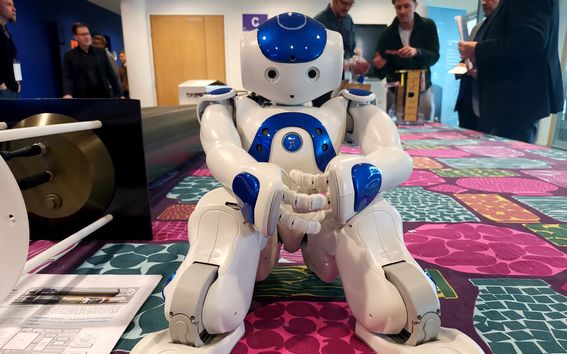Oh, a new object! I wonder how it works? A robot can learn by experimentation

A robotic hand with three fingers grips a ball point pen and lifts it up in the air, feeling its weight and movement.
‘Testing objects is a bit like playing’, Professor Ville Kyrki says. ‘While the robot handles new objects, it learns about them.’
When people are entrusted to cook in an unfamiliar kitchen, they do not necessarily know how to use the equipment and devices. An unfamiliar kettle or microwave oven may work slightly differently from the corresponding device at home. However, most of us have a general understanding of the operational logic behind some of the most common kitchen equipment and devices, and we learn how to use foreign objects very quickly through experimentation.
In order for robots to become part of everyday life, they also have to be able to handle items that they are not pre-programmed to use. The objective of Interactive Perception-Action-Learning for Modelling Objects (IPALM) research project is to find out how robots could learn to use new things with the help of a general model. Kyrki's research team is responsible for developing objects’ manipulation skills, such as gripping.
‘Robots are already pretty good at moving around and transporting goods. However, they do not quite know how to deal with the uncertainty related with the manipulation or processing of objects. For example, a T-shirt and a pillow change their shape when you lift them or poke them with your finger’, Kyrki explains.
Ville KyrkiRobots do not quite know how to deal with the uncertainty related with the manipulation or processing of objects.
Observation through direct contact enables the development of more precise models which the robot can use when planning the implementation of the tasks assigned to it. Currently, learning through the manipulation of objects is one of the capabilities robots still need before they can be used in households.
‘This three-year project carries out basic research that aims to develop robots’ ability to learn about objects and their properties. It is one of the missing skills that a robot needs before it can function in an environment that it is not encrypted for, but it is by no means the only one. Robots do not have common sense, and therefore they are incapable of responding to unexpected situations. In other words, there is still a long way to go before robots can provide general domestic help’, says Kyrki.
Participants in the Interactive Perception-Action-Learning for Modelling Objects (IPALM) include: Imperial College London (coordinator), Aalto University, University of Bordeaux, Polytechnic University of Catalonia and Czech Technical University.
- Published:
- Updated:
Read more news

DeployAI Partners Gather for Heart Beat Meeting in Helsinki
The European DeployAI project's partners gathered for the Heart Beat meeting hosted by Aalto University Executive Education in Helsinki.
Get to know us: Associate Professor Maria Sammalkorpi
Sammalkorpi received her doctorate from Helsinki University of Technology 2004. After her defence, she has worked as a researcher at the Universities of Princeton, Yale and Aalto.
Aalto computer scientists in ICML 2024
Computer scientists in ICML 2024